O uso de tecnologia por empresas e organizações é algo em constante (e eterna?) evolução. Sempre que uma nova tecnologia surge, há com ela um movimento contíguo de adoção pelas empresas, este é o caso da Inteligência Artificial Generativa GenAI.
Foi assim com a máquina a vapor, com a automatização da linha de produção, com os computadores, com a internet, com os celulares, com a nuvem – para mencionar apenas alguns. Algumas empresas adotaram essas tecnologias de maneira mais rápida, outras demoraram a entrar no jogo (e algumas até tentaram lutar contra). Outra tiveram projetos exitosos de implementação, outras fracassaram. Poucas entenderam o jogo, outras não.
Não será diferente com a inteligência artificial generativa. A corrida pela implantação da IA nas organizações já começou há alguns anos – o termo foi utilizado pela primeira vez em 1956, no Dartmouth College (EUA), quando um grupo de pesquisadores criou o “Dartmouth Summer Research Project on Artificial Intelligence”. Não se trata, portanto, de um tema novo.
Uma nova jornada consumerizada
Porém, em 30 de novembro de 2022, o lançamento do ChatGPT pela OpenAI iniciou uma verdadeira revolução nesta temática. Com o advento dos modelos conversacionais, a IA se tornou mais acessível e atrativa para um número muito maior de pessoas e empresas. Pela primeira vez, a IA passou a ser uma tecnologia mais facilmente manipulável por leigos, e não apenas por técnicos ou programadores.
Nas palavras de Alessio Alionço, CEO e cofundador da Pipefy, “a grande mudança não foi a tecnologia em si, mas a consumerização da jornada”. Na visão de Alionço, há três grupos de profissionais dentro das organizações: (1) os que não sabem do que a IA é capaz; (2) os que sabem do que a IA é capaz, mas não sabem utilizá-la; e (3) os que sabem do que a IA é capaz e sabem como utilizá-la.
Antes da chegada do ChatGPT como interface da IA, o grupo 2 era bastante pequeno se comparado ao grupo 1 – e o grupo 3 era mínimo, normalmente restrito a especialistas em tecnologia. Isto é, poucas pessoas sabiam do que a IA era capaz e menos ainda sabiam como utilizá-la.
Com o advento do ChatGPT e modelos conversacionais similares, o grupo 2 aumentou enormemente, com mais pessoas entendendo as capacidades da IA. Porém, a principal e mais impactante transformação foi que o grupo 3 cresceu ainda mais, à medida que, atualmente, quase todos aqueles que entendem o poder da IA podem também fazer uso dela de maneira fácil e intuitiva. Ou seja: o acesso e uso foi fortemente democratizado.
Caminho sem volta? Há desafios de implementação
Uma pesquisa recente da Microsoft e do LinkedIn, denominada AI at Work 2024, ajuda a comprovar essa democratização. De acordo com essa pesquisa, 75% dos entrevistados já estão utilizando IA no trabalho atualmente – e nem sempre com plataformas e ferramentas fornecidas pela empresa, isto é, muitos estão utilizando as próprias IAs no ambiente corporativo. Os dados também mostram que os usuários estão gostando dos resultados: 90% disseram que a IA os ajuda a economizar tempo; 85% disseram que os ajuda a focar no trabalho que mais importa; e 83% reportaram que a IA os torna mais produtivos.
Ao mesmo tempo em que essa ampliação do acesso é bastante positiva, traz consigo também novos – e urgentes – desafios de implementação. Com mais e mais indivíduos entendendo e usando IA, é fundamental que as empresas criem modelos e regras de utilização conectados com suas estratégias e objetivos de negócios – e não apenas como uma tecnologia instrumental isolada.
Nesse sentido, uma nova linha de visão em relação à implementação da IA gen nas organizações tem surgido e traz consigo uma perspectiva bastante interessante: de que a IA gen não deve ser tratada como uma mera ferramenta ou serviço de suporte aos humanos, mas sim como um novo colega de trabalho não humano que complementa, amplifica e potencializa as capacidades dos seus colegas humanos.
Uma evolução de SaaS (Software as a Service) para TaaT (Technology as a Teammate)
Parece algo simples ou uma mera mudança de nomenclatura. Mas não é. Ela traz consigo toda uma nova visão de adoção e implementação, que possui impactos potenciais em diversas áreas – até mesmo na definição das competências esperadas de cada cargo, das descrições dos cargos e funções de humanos e não humanos, dos treinamentos e capacitações, dos limites éticos e morais, enfim, uma verdadeira redefinição da cultura organizacional.
De acordo com a definição encontrada no site da WalkMe, uma empresa do grupo SAP:
“Em vez de ver a tecnologia como uma ferramenta ou uma entidade separada, essa perspectiva (a de “technology as a teammate”) enfatiza a integração perfeita da tecnologia em fluxos de trabalho humanos para aumentar a produtividade, a eficiência e o desempenho geral. Em uma estrutura colaborativa ou de equipe, a tecnologia é projetada para complementar habilidades e capacidades humanas, preencher lacunas, automatizar tarefas de rotina e dar suporte a processos de tomada de decisão. Essa abordagem reconhece os pontos fortes dos humanos e da tecnologia, com o objetivo de criar uma parceria sinérgica que maximize as vantagens de cada um.”
Mark Fitzgerald, senior director da Propeller, uma consultoria de gestão americana, compartilha de uma visão parecida. Para ele, muitos projetos de implementação de IA dão errado porque a IA é mal compreendida, tratada como uma ferramenta que magicamente resolveria tudo, ao invés de ser tratada como uma capacidade que aprende e se adapta – e, neste sentido, estaria mais próxima que um novo funcionário animado e curioso do que de uma ferramenta tecnológica fria.
Ainda na visão de Fitzgerald, deveríamos tratar a IA não como uma ferramenta a ser usada, mas como um companheiro de equipe para colaborar, moldando um futuro em que a parceria entre humanos e IA é a melhor vantagem competitiva.
Novos contextos, novas habilidades necessárias
Essa nova visão em relação à tecnologia demanda também um olhar distinto em relação às competências esperadas dos humanos para extrair o melhor proveito dela. Gerenciar um novo colega de trabalho pressupõe habilidades específicas e bastante distintas de utilizar um software. Enquanto utilizar um SaaS demanda conhecimentos técnicos e habilidades afuniladas, trabalhar com um TaaT demanda aprimorar as habilidades de comunicação ampliadas em duas frentes: nas conversas com humanos e nas conversas com a IA.
O Gartner compartilha dessa visão. Em uma publicação do final de 2023, intitulada The Chief Sales Officer Quarterly, a renomada consultoria destaca, em um recorte específico sobre o mundo de vendas, que a função do vendedor (e aqui podemos expandi-la para diversas funções organizacionais) será simplificada em duas áreas-chave:
– Competências emocionais para tratar com humanos: empatia, escuta ativa, decodificação cognitiva, tomada de perspectiva. São habilidades essenciais para entender o que seres humanos do outro lado das relações falam, como eles pensam, como se sentem e, em um nível mais sofisticado, para prever como vão agir.
– Competências de colaboração com tech teammates: identificação de alucinações, engenharia de prompts, seleção de casos de uso e potencial criativo. São habilidades essenciais para mostrar aos tech teammates a visão, guiá-los pelo caminho e ajudá-los a evoluir constantemente.
Como podemos ver, uma habilidade humana essencial segue sendo o centro desta nova estratégia: a capacidade de fazer boas conversas. A diferença, contudo, reside no fato de que essas conversas agora se abrem em duas ramificações igualmente importantes: a conversa com humanos e a conversa com tech teammates.
Investimento em colaboradores
O investimento no desenvolvimento de colaboradores para aprimorarem cada vez mais essa habilidade de conversar ganha ainda mais importância. Aliás, no lado da “conversa com humanos”, ele nunca deveria ter arrefecido. Contudo, com base na minha experiência como coach e mentor de executivos dos mais diversos setores e indústrias, posso perceber que a má qualidade das conversas dentro e fora das organizações segue sendo um grande desafio a ser enfrentado. Se considerarmos que um executivo sênior pode passar até 75% do seu tempo em reuniões e conversas, isso beira o absurdo.
A consultoria americana Conversant, especializada em auxiliar organizações a melhorarem a qualidade das conversas e interações, diz que o caminho para construirmos conversas de qualidade é focarmos na geração de valor (value) e na eliminação do desperdício (waste) em cada interação. Para ela, valor é “tudo aquilo pelo qual clientes e investidores estejam dispostos a pagar e que colaboradores estejam aptos e dispostos a fornecer”. Já desperdício é “qualquer uso de tempo e outros recursos que não contribua para a geração de valor”.
Vejo que esse foco não apenas define a importância de habilitarmos os colaboradores para melhorarem a qualidade de suas conversas, mas também reforça a relevância da adoção do TaaT pelas organizações: deixar aos humanos o foco essencial em tudo aquilo que gera valor, contando com a fundamental contribuição dos nossos pares tecnológicos para reduzir (ou eliminar) o desperdício de tempo e recursos.
Uma boa estratégia de implementação de IA como teammate passa por guias claros de como essa relação acontecerá, de quais competências serão esperadas e desenvolvidas, como o sucesso será medido e qual será o loop de feedback. E tudo isso tem mais chance de êxito se a estratégia for “human-centered” e baseada na colaboração real entre pessoas e seus parceiros IAs.
Pesquisas
É o que diz o report State of AI at Work 2024, da Asana:
“Ver a IA como um parceiro colaborativo pode promover um relacionamento mais integrado e mutualístico entre humanos e tecnologia, abrindo novas possibilidades para brainstorming, resolução de problemas e tomada de decisão. Para desbloquear todo o potencial da IA no local de trabalho, os líderes devem priorizar abordagens de IA centradas no ser humano e posicionar a IA como um amplificador do potencial humano e um companheiro de equipe.”
Como modelo de negócios: oportunidade
Tudo que falamos até aqui vale, essencialmente, para qualquer empresa ou organização, já que a evolução do modelo de pensamento de Saas para TaaT pode gerar benefícios amplos.
Contudo, vale também destacar a oportunidade que surge para empresas (tech ou não) que conseguirem ajudar outras empresas nesse processo de transformação via soluções simples e acessíveis.
Scott Galloway, professor da New York University, disse recentemente, em suas “Previsões para 2025”, que as próximas empresas vencedoras serão aquelas capazes de “capitalizar o serviço como software, ou seja, pegar serviços intensivos em mão de obra e adicionar uma camada espessa de IA para escalar com menos mão de obra”. Ou seja, uma releitura do “software as a service” para o “service as a software”, nas palavras do professor.
Não fique confuso com tantas siglas, caro leitor. Não há conflito entre elas, na minha visão. O que podemos entender aqui é que empresas que souberem transformar serviços em software para ajudar organizações a focar na geração de valor e no fim do desperdício terão maiores chances de ganhar o jogo (do ponto de vista das oportunidade de negócios em AI); da mesma forma que organizações que conseguirem ressignificar sua relação com a tecnologia, vendo-a como um parceiro de trabalho e não como uma ferramenta, terão mais chances de êxito (do ponto de vista da adaptação cultural para os desafios de futuro).
Créditos
Artigo do Denis Garcia F. Rocha no MIT Sloan Review. Denis é executivo sênior com mais de 20 anos de experiência na área comercial e novos negócios em empresas de diversos segmentos e portes. Atualmente lidera a área de enterprise customers do LinkedIn (divisão sales solutions) na América Latina. É professor e coach executivo.
IA Generativa no ServiceNow: Aplicações e Benefícios
A inteligência artificial (IA) tem transformado a maneira como empresas gerenciam suas operações, e a IA generativa surge como uma inovação poderosa para otimizar processos, criar conteúdo e melhorar a experiência do cliente. No contexto do ServiceNow, essa tecnologia possibilita diversas aplicações que aprimoram a automação de tarefas, o atendimento ao cliente e a tomada de decisões.
Aplicações da IA Generativa no ServiceNow
1. Atendimento ao Cliente e Suporte
A IA generativa pode ser usada para melhorar o suporte ao cliente, respondendo a perguntas frequentes com base em modelos de processamento de linguagem natural. Isso permite que sistemas de chatbots entendam e respondam de maneira mais humanizada e precisa, reduzindo a necessidade de intervenção humana.
2. Criação de Conteúdo e Geração de Dados
Com a capacidade de criar textos, imagens e vídeos, a IA generativa cria materiais de alta qualidade, auxiliando na comunicação empresarial. Além disso, pode gerar dados sintéticos para análise de dados e desenvolvimento de modelos de aprendizado.
3. Automação de Processos e Redução de Custos
A IA otimiza processos ao automatizar tarefas repetitivas e facilitar a integração entre diferentes sistemas, proporcionando maior eficiência e redução de custos.
4. Geração de Imagens e Transferência de Estilo
Os modelos de IA generativa, como as redes adversárias generativas e o modelo de difusão, permitem a criação de imagens realistas e personalizadas para diversas aplicações, como design e marketing.
5. Melhoria na Tomada de Decisões
A IA generativa pode analisar grandes conjuntos de dados, detectar padrões e fornecer insights para uma melhor tomada de decisões estratégicas.
6. Plataformas de Dados e Inteligência de Negócios
Empresas podem utilizar plataformas de dados baseadas em IA para aprimorar a inteligência de dados, aproveitando os dados de treinamento para ajustar modelos e melhorar a precisão das previsões.
Futuro da IA Generativa no ServiceNow
A pesquisa de IA avança rapidamente, tornando os sistemas de IA generativa cada vez mais eficazes. Com práticas recomendadas e aprimoramento constante dos modelos base, a IA tem potencial para transformar diferentes setores, incluindo o setor público e o corporativo.
A tendência é que a capacidade de criar novos conteúdos e insights continue a evoluir, permitindo um futuro no qual a tecnologia de IA desempenhe um papel central na inovação e no aprimoramento da experiência do usuário. A IA tradicional e os modelos baseados em transformadores continuarão a evoluir, trazendo novas oportunidades para organizações que buscam inovação.



